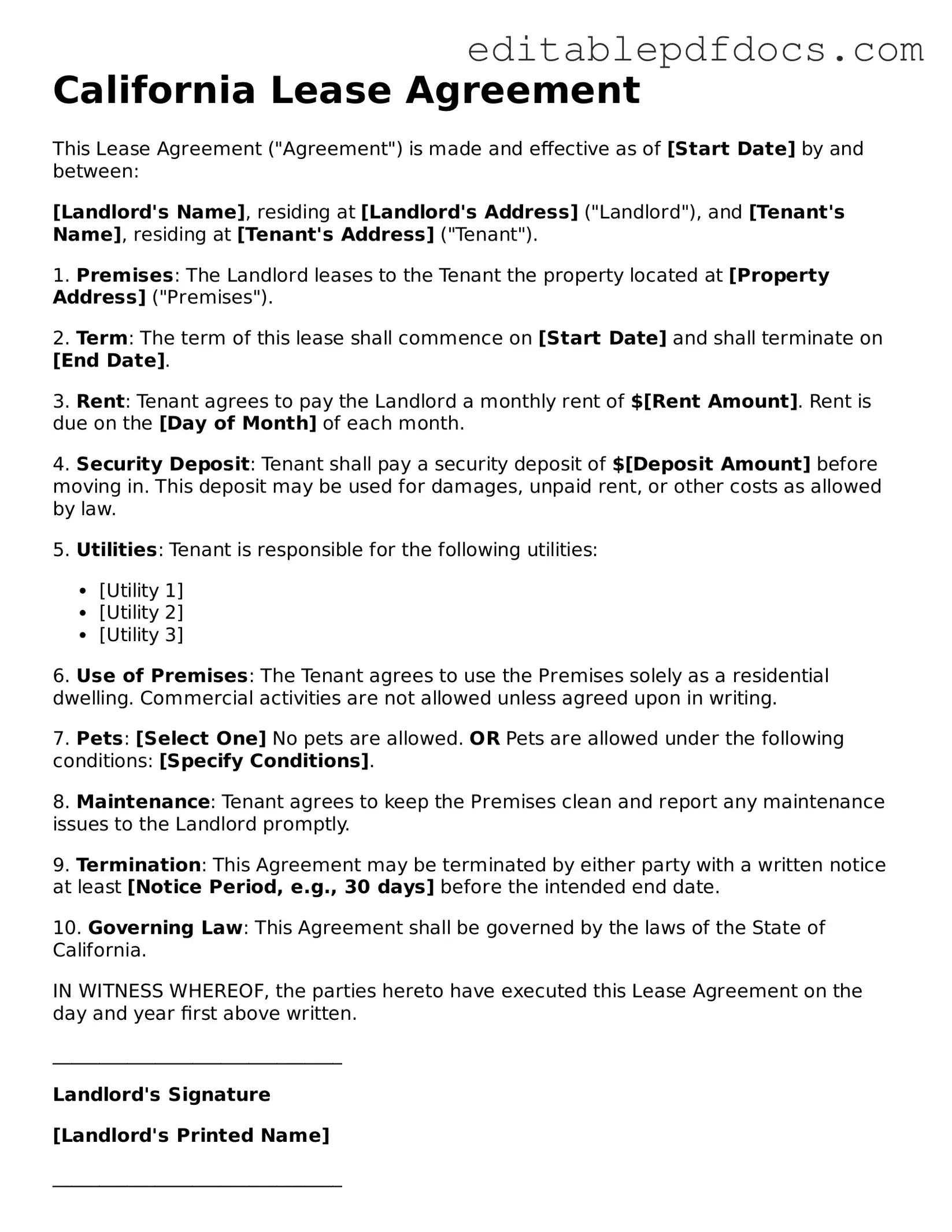Filling out a California Lease Agreement form can be a straightforward process, but many individuals make common mistakes that can lead to confusion or legal issues down the line. One frequent error is failing to provide complete information about all parties involved. Each tenant and landlord should be clearly identified, including full names and contact information. Omitting a tenant or using nicknames can create complications in enforcing the lease.
Another mistake often made is neglecting to specify the rental amount and payment terms clearly. It’s essential to state not only the monthly rent but also any additional fees, such as utilities or maintenance costs. If these details are vague or missing, disputes may arise regarding what is owed each month.
Many people overlook the importance of detailing the lease term. The agreement should clearly outline whether it is a month-to-month lease or for a fixed term, such as one year. If the lease term is not specified, it can lead to misunderstandings about when the lease begins and ends, potentially resulting in unexpected eviction notices.
Security deposits are another area where mistakes frequently occur. California law has specific rules regarding the amount that can be charged for a security deposit, as well as the conditions for its return. Failing to address these rules in the lease agreement can lead to disputes when the tenant moves out.
Additionally, many individuals do not include provisions for maintenance and repairs. It is crucial to outline who is responsible for maintaining the property and how repairs should be handled. Without clear guidelines, tenants may feel uncertain about their rights and responsibilities, leading to frustration for both parties.
Finally, some people forget to include clauses related to termination and renewal of the lease. It is important to specify the notice period required for either party to terminate the agreement or to renew it. Without these provisions, tenants and landlords may find themselves in difficult situations when they wish to end or extend the lease.
